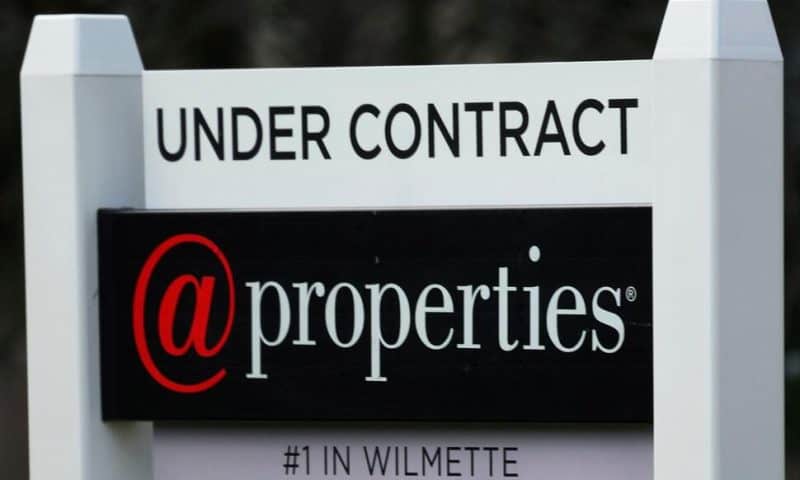The average long-term U.S. mortgage rate rose modestly this week, holding below 7% as it has for much of this year
LOS ANGELES — The average long-term U.S. mortgage rate rose modestly this week, holding below 7% as it has for much of this year.
The average rate on a 30-year mortgage rose to 6.82% from 6.79% last week, mortgage buyer Freddie Mac said Thursday. A year ago, the rate averaged 6.28%.
When mortgage rates rise, they can add hundreds of dollars a month in costs for borrowers, limiting how much they can afford in a market already out of reach for many Americans.
Rates have been drifting higher and lower in recent weeks, often from one week to the next. The average rate for the benchmark 30-year mortgage is now just below where it was two weeks ago.
After climbing to a 23-year high of 7.79% in October, the average rate on a 30-year mortgage has remained below 7% since early December, though it also hasn’t gone below the 6.6% it averaged in January.
In late February, it got up as high as 6.94% after stronger-than-expected reports on inflation, the job market and the economy clouded the outlook for when the Federal Reserve may begin lowering its short-term interest rate.
Many economists expect that mortgage rates will ease moderately this year, but that’s not likely to happen before the Fed begins cutting its benchmark interest rate. Last month, the central bank signaled again that it expects to make three rate cuts this year, but not before it sees more evidence that inflation is slowing from its current level just above 3%.
How the bond market reacts to the Fed’s interest rate policy, as well as other factors can influence mortgage rates. Current indications are mortgage rates will remain higher for a while longer.
“While incoming economic signals indicate lower rates of inflation, we do not expect rates will decrease meaningfully in the near-term,” said Sam Khater, Freddie Mac’s chief economist.
The U.S. housing market is coming off a deep, 2-year sales slump triggered by a sharp rise in mortgage rates and a dearth of homes on the market. The overall pullback in mortgage rates since their peak last fall has helped provide more financial breathing room for homebuyers.
Sales of previously occupied U.S. homes rose in February from the previous month to the strongest pace in a year. That followed a month-to-month home sales increase in January.
Still, the average rate on a 30-year mortgage remains well above where it was just two years ago at 4.72%. That large gap between rates now and then has helped limit the number of previously occupied homes on the market because many homeowners who bought or refinanced more than two years ago are reluctant to sell and give up their fixed-rate mortgages below 3% or 4%.
Even so, the pace of new homes hitting the market in the leadup to the spring homebuying season has been stronger than last year.
Active listings — a tally that encompasses all the homes on the market but excludes those pending a finalized sale — jumped nearly 24% in March from a year earlier, according to Realtor.com. That marks the fifth consecutive month of annual inventory growth.
Home shoppers last month still had far fewer options than they did before the pandemic. In March 2019, active listings were nearly 38% higher.
Meanwhile, homeowners looking to refinance their home loan got a break this week. Borrowing costs on 15-year fixed-rate mortgages fell, pulling the average rate to 6.06% from 6.11% last week. A year ago it averaged 5.64%, Freddie Mac said.

